New Labeling Guidelines for Compostable Packaging Released
Posted by Eco-Products on Oct 6th 2020
Good labeling on compostable packaging is something that we talk about a lot at Eco-Products. After all, if we want our products to get in the compost collection bin, consumers need to be able to tell that it is compostable. Additionally, clear guidelines help to ensure that contamination stays out of the compost stream. One state has even set out guidelines to try and limit the confusion around poor labeling of compostable packaging, and misleading labeling on non-compostable packaging. Washington state’s HB 1569 is the first of its kind to try and put up guardrails around what can be labeled compostable and how that labeling ought to look.
This bill states that any product that is labeled compostable must be made of only natural material or it needs to meet ASTM standards for determining compostability. Those items that fall under those two categories should be labeled with a third-party logo that communicates the product’s compliance with the standard. Additionally, food service items must be “readily and easily identifiable” as compostable.
 In response, the Biodegradable Products Institute (BPI) embarked upon a stakeholder process to put forth industry best practices, as well as explain some of the current limitations around labeling on certain items. These “Guidelines for Labeling and Identification of Compostable Products” are a tremendous step to ensuring that compostable packaging realizes its full potential – delivering food scraps to compost manufacturers.
In response, the Biodegradable Products Institute (BPI) embarked upon a stakeholder process to put forth industry best practices, as well as explain some of the current limitations around labeling on certain items. These “Guidelines for Labeling and Identification of Compostable Products” are a tremendous step to ensuring that compostable packaging realizes its full potential – delivering food scraps to compost manufacturers.
If BPI’s guideline document seems a little too intimidating for you, start with Biocycle’s informative introduction and walkthrough of the guidelines.
Let’s Make it Better


